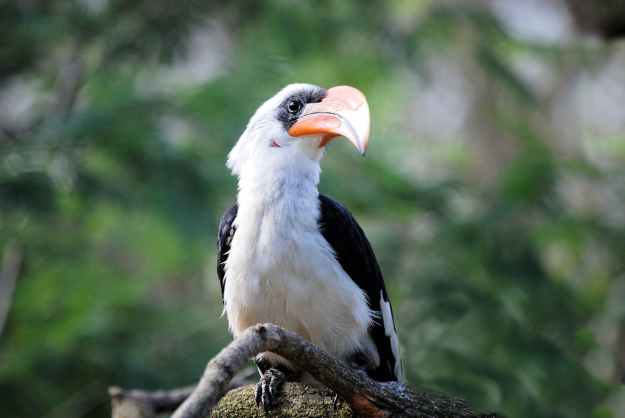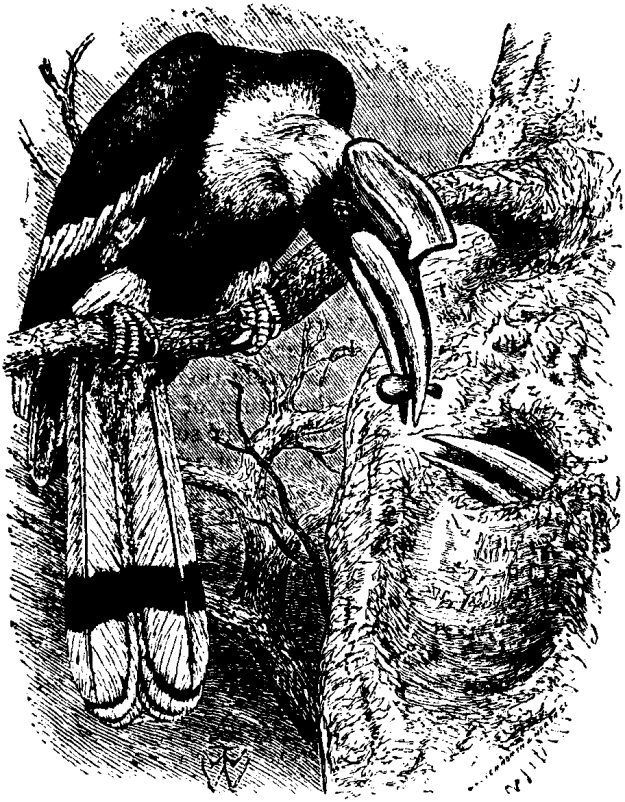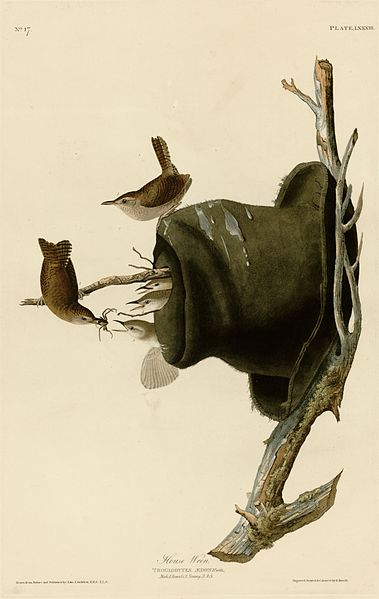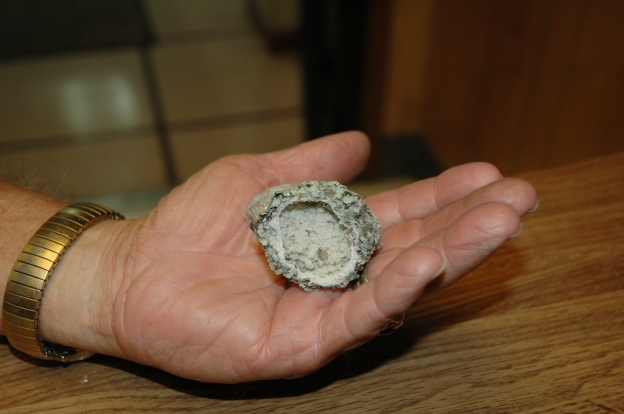
Photo by Pixabay on Pexels.com • Exotic birds such as the hornbill often employ ingenious nesting methods to ensure successful reproduction.
I received a letter from Wayne and Dot Ballard sharing information about an ingenious but unexpected roosting location they provided for a wren at their home in Marion, North Carolina.
Wayne found the an old bird’s nest attached to the limb of a cedar tree. Dot tied a piece of twine around the ends of the limb and let it hang from a hook under the eave of their porch.
A few days later, the limb and nest attracted the notice of a Carolina wren. The bird, finding this snug nest in a convenient location, adopted it as a nighttime roost. “We watched, and every evening just as the sun was setting, a wren came and set on the porch swing and then hopped right up into the nest, head first,” Dot wrote. “This continued every evening for six or seven weeks, with its arrival times adjusted as the days got shorter.”The couple couldn’t verify if their observation involved the same bird nightly, but I suspect it did. “With its head stuck into the nest, it must have rested pretty good,” Dot said. “My husband said he had seen it leave when he got up early in the morning.”
Wayne and Dot felt fortunate to enjoy this peek into the wren’s life. “We always enjoy God’s nature, especially when we are allowed to witness it so close,” Dot wrote.
The couple did ask if I thought the nest had been built by wrens. I believe that, although a Carolina wren adopted the nest for its roost, another species of bird probably built the nest. The photos the Ballards enclosed with their letter show a cup-shaped nest of the sort that might have been built by a sparrow or warbler.

Photo by Maurício Filho on Pexels.com • Many birds build cup-shaped nests
Their letter persuaded me to explore some of the unusual ways some of our feathered friends go about creating a nest, or home, for their young. The ingenuity of some birds in building a nest is quite remarkable.
The majority of our common backyard birds build the familiar “cup-shaped” nest that is tucked away in a shrub or the fork of a tree. Birds that build nests in such a fashion include everything from blue-grey gnatcatchers and scarlet tanagers to indigo buntings and American goldfinches.
Other birds, such as Eastern bluebirds and tree swallows, accept human-provided nesting boxes. In the past, these birds relied on natural cavities, such as a rotten knothole in a tree’s trunk or a weathered fence post that had gone hollow. Many cavity-nesting birds do not or cannot excavate their own cavities. Some birds are better equipped to excavate their own cavities or burrows in everything from tree trunks to river banks. Cavity-nesting offers an added degree of protection in comparison with an exposed and vulnerable cup nest tucked in a hedge or dense shrub. Some birds, however, have taken cavity-nesting practices to the extreme.
For instance, the female great hornbill builds her nest in the hollow centers of large tree trunks, and the opening is sealed with a plaster made up mainly of mud, droppings and fruit pulp. She remains imprisoned in her nest until the chicks are semi- developed, relying on the male to bring her food. During this period the female undergoes a complete molt. The young squabs are devoid of feathers and appear very plump. She is fed by her mate through a slit in the seal. The clutch consists of one or two eggs she incubates for 38-40 days. Once the female emerges out of the nest, it is sealed again by the chicks. In some species, the young depart with their mother, and are tended outside of the former nesting cavity by both parents. The great hornbill resides in the forests of India, the Malay Peninsula and Sumatra, Indonesia. There are about 55 species in the hornbill family, which ranges through Africa, Asia and some of the islands of Melanesia.

Megapodes — also known as “incubator birds” or “mound-builders” — do not incubate their eggs with their body heat as other birds do, but bury them. Their eggs are unique in having a large yolk, making up 50-70 percent of the weight of the egg. They are best known for building massive nest-mounds of heat-producing, decaying vegetation, which the male attends, adding or removing litter to regulate the internal heat while the eggs hatch.
This method of incubation is something practiced by some reptiles, including crocodiles and alligators, but it is definitely unusual among birds. Once hatched, young birds are fully feathered and active, already able to fly and live without any care or assistance from their parents.

Wrens are known to nest and roost in some unusual places, as shown in this painting of wrens nesting in an old hat by artist John James Audubon.
Two of the better-known species, both from Australia, are the malleefowl and the Australian brush-turkey. There are about 20 species of birds classified as Megapodes, and they are concentrated in the Australasian region, including islands in the western Pacific, Australia, New Guinea and the islands of Indonesia east of the Wallace Line. They also occur on the Andaman and Nicobar Islands in the Bay of Bengal.
The white tern is a small seabird found across the tropical oceans of the world. Although other terns build nests, the White Tern no longer bothers to construct even a rudimentary nest. Instead, the female lays a single egg on bare branches or in a small fork in a tree. Nothing else is added to the location where the egg is deposited.
The behavior is not typical of terns, which generally nest on the ground and construct the nest of such materials as shells or other debris.
Of course, both the eggs and chicks of white terns are vulnerable to becoming dislodged by heavy winds. Newly-hatched chicks have well developed feet they use to hang on to their precarious nesting site.

Photo by U.S. Fish & Wildlife Service • A white tern incubates a single egg but doesn’t build an actual nest.
The sparrow-sized sociable weaver (Philetairus socius) of Africa enjoys company, which explains how and why such a small bird constructs a huge nest. Actually, many of these birds working together construct a huge structure — sometimes described as similar to a bale of hay — that hangs from sturdy trees and other tall structures. Such a “compound nest” is rather rare among birds.
The communal nests built by sociable weavers can house 100 pairs of birds and are quite spectacular. They are also considered the largest bird-built structures in the world. Other birds also benefit from these huge structures, which are built mostly of grass and sticks. Other species of the Ploceidae, or weavers, also build communal nests, but their efforts are not quite as impressive as those constructed by the sociable weaver. Other small birds may also nest or roost in the structure, and large birds, such as vultures, have been known to build their own nests on top of these compound nests.
In nature, nothing gets wasted. A Carolina wren using another bird’s used nest is not all that rare. These birds are fond of a cozy nook. If they can find one ready-made, it’s all the better.

Photo by Cathy Visser on Pexels.com


Reblogged this on Wolf's Birding and Bonsai Blog.
LikeLike